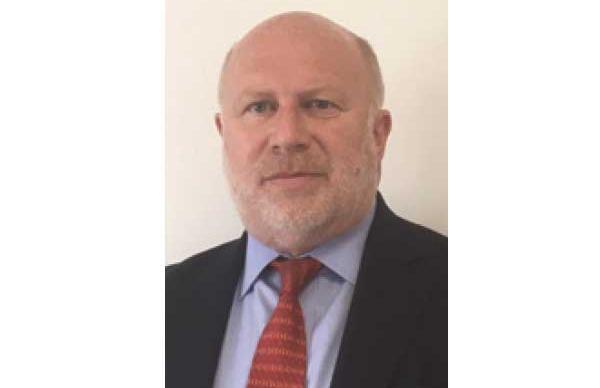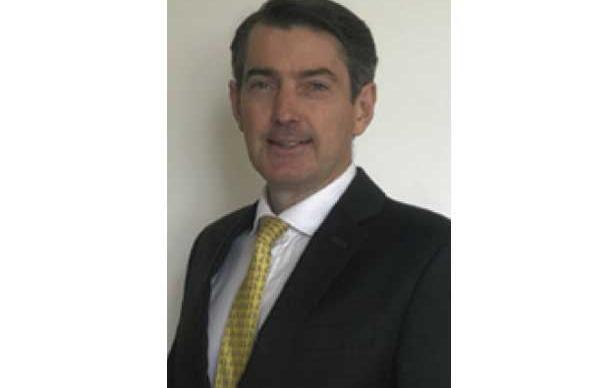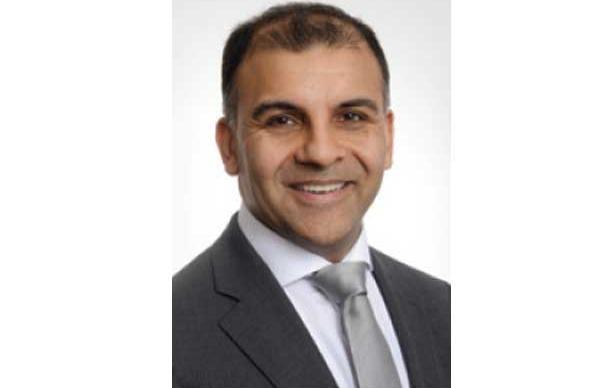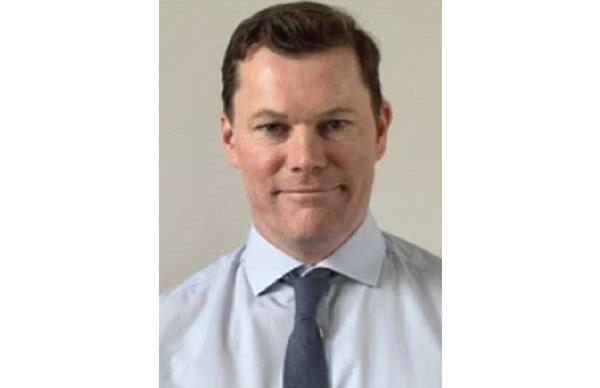During a virtual round table, in partnership with European Pensions, a panel of industry experts consider the medium and long-term prospects for inflation, its potential impact on portfolios and the hedging tools available for pension funds to prepare for whatever the future may hold.
Chair: CLAIRE LINCOLN Head of Institutional Sales, World Gold Council
Panel:
ANDREW COLE Trustee Executive, BESTrustees
MARTIN COLLINS Trustee Director, 2020 Trustees
RAJ MODY Global Head of Pensions Consulting, PwC
DERRY PICKFORD Principal, Aon
JOHN O’BRIEN Partner, Europe Zone Leader, Mercer
PHILIP ROSE Chief Investment Officer Strategy & Risk, Redington
JOHAN PALMBERG Senior Quantitative Analyst, World Gold Council
Inflation fears and pension funds
Chair: Inflation is sitting at the top of investors’ agendas and the topic is dividing the crowd into various camps. Are you an inflation hawk, sharing the table with the likes of Larry Summers, urging the White House to scale back its stimulus program, otherwise the US may find itself in an inflationary episode not seen in a generation? Former chief economist at the Bank of England (BoE), Andy Haldane, holds a similar dreary outlook. He recently said that he believes once the so-called inflation genie is let out, it may prove difficult to get back into the bottle.
Or perhaps you are an inflation dove, sitting amongst Christine Lagarde and Jerome Powell, who insist that higher inflation will prove nothing but transitory. The common thread amongst this group is that they believe the risk of removing stimulus too soon outweighs the risk of igniting a little inflation.
Or finally, you may find yourself in a third camp which almost has a pandemic tone about it. It’s all about the data, dates, or both.
Whichever camp you fall in, how worried are, or should, pension funds be about the prospects for inflation and are they doing enough to deal with this potential risk?
Rose: By pure nature of UK defined benefit (DB) schemes, inflation has always been one of the clear risks they have had to deal with, and one they’ve actively managed. It’s probably a case where macro views have been something you delegate down, because trying to determine asset returns from macro views is difficult. Even people who spend a lot of time and effort on it, and have a good track record, find it difficult to do as we’ve seen in the positioning of any number of hedge funds and macro funds – they very easily go wrong.
Most of our clients are well hedged against the inflation exposure that comes with DB liabilities – they have large exposures to long-dated inflation expectations, and hedge those, and have ongoing hedging programs as their liabilities change and as inflation expectations change.
So, from a DB point of view, the inflation linkage is fairly well contained and well hedged.
From a defined contribution (DC) point of view, the difficulty with putting risk management in place is, if you look at what DC members actually do, very few take up index-linked pensions, or they take up even fixed-rate pensions. The demand there is much more for a nominal sum, rather than for an inflation linked cashflow of some type.
Thinking about what might happen in the future, you need to look at the combination of both inflation and growth, because central banks over last ten/twenty years succeeded on inflation, but they failed on growth, so a more balanced approach between the two is probably a good thing. That said, there are a lot of risks in the European approach of trying to keep inflation very low, but also by keeping growth low as well.
Pickford: Most of our DB clients also have their direct inflation risks well hedged. My concern lies more around the indirect risks of an inflation spike on the real value of growth assets. We don’t think inflation is going to be high indefinitely. Some of the shock to inflation is transitory, and driven by supply bottlenecks, which will eventually ease. However, we suspect some is driven by strong growth too, so tighter monetary policy might be needed. Central banks have plenty of room to tighten policy if necessary, but are growth asset prices necessarily pricing that risk in?
So, whilst direct risks are well managed by most DB schemes, that doesn’t mean we can be totally relaxed about inflation risks.
O’Brien: Across our client base, on the DB side, we see high hedge ratios too and a good understanding of where there is basis risk, and where there is exposure beyond what market instruments can deliver.
It is right that pension funds and the sponsors behind them think about inflation because their time horizon now is more immediate
Inflation hedging gets more complicated when you look at the continent because, first of all, where there is inflation linkage among pension funds, it often has an element of discretion associated with it, certainly on the post-retirement side. Often there are caps and collars that are cumulative by nature, and that is difficult to assess, difficult to model, but also changes people’s perceptions. They may say, for example, “I only have a max of 10% exposure to inflation here, so why should I worry about bringing something potentially expensive on board?”
To pick up on Philip [Rose’s] comments on DC, the loss of purchasing power among DC members approaching maturity has never really been tested because we’ve lived in a low inflation environment for the entire history of the DC market. As we see the IORP risk function and other governance enhancements starting to take shape around the continent, a lot of thinking will need to be done about how to protect DC benefits.
Mody: To pick up on the point about inflation definition, in the context at least of DB schemes, we are not talking about unlimited retail price inflation; we are talking about a capped and collared version of that – limited price inflation.
Another force that is moderating the underlying inflation exposure which DB funds have is, at least in the UK, the movements happening from 2030 to redefine RPI to a CPI basis of calculation. All of that serves to contain the exposure that pension funds have, although it is still there of course.
It is right that pension funds and the sponsors behind them think about inflation because their time horizon now is more immediate. If you look at how pension funds were investing in the ’80s and ’90s, you could afford to have a long term time horizon in order to get inflation-beating returns, but now, when you look at the £1.8 trillion worth of assets that are sitting in UK DB schemes, about £50 billion of those are being paid out every year in pensions. That’s a much more clear and present exposure to inflation. It’s not some conceptual risk that you have to manage over the next decade or two – you have to manage it this year, next year, and the year after. That’s a new feature of managing inflation in the 2020s that was different from decades ago.
Also, there are more options for pension funds today, and for their members, when it comes to reshaping benefits and that is a relative novelty when you look at the multi-decade lifetime of pension schemes. That didn’t happen historically, but from the turn of this century many pension schemes have given members options to reshape the inflation around their benefits.
So, in a situation when inflation might be high, and because of the fair value exchanges that go on when members take these options, they’ll be paid good value when there’s a concern about future inflation risk. Just at the time when inflation exposure might be increasing for pension funds, it might be a good platform and a time for when members are prepared to take that trade and trade out inflation risk for a flat pension.
Finally, we need to think about retirement and an individual’s income needs in a more modern way than used to be the case. I think an inflation linked pension for the rest of life, say from the age of 70 onwards, is not a very good fit for a typical person’s likely income needs.
Putting long term care aside, generally speaking, because of health, mobility, lifestyle and so on, if you think about older people’s lifestyles, you will have a certain spending pattern for your 60s. It probably does then reduce for a decade into your 70s, and then it reduces again into your 80s. You’re not doing in your 80s what you might have been doing in your 60s. So I’m not sure you need an inflation linked pension in your retirement. You might do very well to have a flat pension which maintains its purchasing power in respect of the actual expenditure and outgoing that you might need to have as an individual over time.
Chair: There’s been a lot in the press lately on this point and trying to almost present value what you’re going to need in 20, 30 years’ time. That’s a really interesting point.
Cole: Most DB schemes I’m involved in are reasonably hedged – anything between 75% to 100%. There is, however, a lot of basis risk with respect to the inflation pay out profiles. Schemes have different inflation which means it is difficult to hedge precisely. Therefore, it doesn’t seem to me too much of an issue today but, because of the basis risk, we will be having to re-hedge schemes on a fairly regular basis, which could be every two to three years. The bigger issue is the lack of hedging instruments that are out there. In the UK, for example, I’m not aware of a very liquid market in terms of CPI linked products.
I also agree there is an issue with DC going forward. The point about lifestyle changes as people get older has already been made.
Collins: I have been more concerned about inflation since the start of the pandemic, because of the nature of government deficits opening up. But generally, where I’ve been managing schemes for a long time, it’s a risk we’ve hedged out because predicting future inflation is too big a risk to run.
You can never hedge precisely, you always have some imprecisions, but most schemes are on a journey somewhere towards taking it down radically. It’s more challenging for schemes that are less advanced on that journey because you’ve also got to think where you are relative to your interest rate hedging position. Actually going too far, one ahead of the other, is a bigger risk than having both unhedged. But, most people are on a journey to reduce the risk, because it is too hard to call.
On Raj [Mody’s] point on exchanges by members of increases for higher flat pensions – that’s an interesting development and it’s great to give members choice. It’s really good as trustees though to hedge that risk up until those exchanges happen and then you can release the hedges, because you’re still running that risk until the exchange happens.
Short-term versus long-term
Chair: If we think about the short-term versus beyond 2021, are we moving into a transitory period, or into a new inflation era?
Mody: It’s an interesting time to be asking whether there is a likelihood of certain short-term disruption to inflation. Not necessarily because of underlying factors, but because of how the mathematics of inflation plays out. When you’re comparing what’s happened during a period of disruption – and you’ve had macro issues like oil price and huge disruptions to supply chain all feeding through and that has served to make the cost of goods at all parts of the supply chain wobble – you’re going to see mathematical quirks coming through when you compare annual inflation from one year to another.
There have already been massive disruptions to the demand side of things as well. Consumer and business behaviours have changed radically. All of that is going to create a short-term disruption, probably over the next year or two, as we return to a more normal pattern of working behaviour/consumer lifestyle, and in relation to the global supply/demand chain as well. That’s the short-term view.
Long-term – particularly in the UK given the BoE’s central bank focus on managing inflation, and given the fact that, from a pension fund perspective, there are limits to your inflation exposure and in many cases substantial hedging – I don’t think it’s a huge long-term risk. The question I would pose is: what is creating this fundamental dislocation around the way that markets are measuring inflation risk, which in turn is creating problems for pension scheme holdings, including particularly index-linked gilts?
For example, if you look at what happened through most of 2020 and the inference you can make from index-linked and fixed interest gilt markets, broadly speaking, as an investor or a holder of index-linked gilts, you were paying about £160 for £100 worth of index-linked maturity value.
Over a 20-year period to maturity, that does feel high in terms of what is happening there in respect of the risk of inflation the investors think they are protecting themselves against.
That has sustained throughout 2020, but interestingly it’s sustained through to 2021, even after the announcement about changing RPI to CPIH last November. So, effectively, instead of say £100 on maturity, if you follow through the CPIH wedge impact, it’s like you’re getting the equivalent of an index-linked £92 say on maturity, because you’ve taken out some of the formula effect of what will happen to RPI.
Investors are now paying, if you went into the market now, roughly £160 for £92 in today’s money – £92 of future maturity value over a 20-year time horizon. That does feel, relative to other opportunities, like a relatively expensive way of hedging inflation.
That then raises a whole raft of questions about what’s happening in that market, what the right strategy for pension schemes might be if, as is classically the case, actuaries are using that market inferred approach as information to create their inflation forecasts. If they are doing that, there’s likely to be a distortion in that inflation forecast.
Palmberg: In the near-term, it does feel like the inflation story is something that’s created in the press, and also perhaps in Andy Haldane’s office! Thinking, for example, about the recent prints that we have seen – CPI in the US up 5% for the second time in 30 years, and more importantly the core PCE number from the US that came out two weeks before – we sort of knew these things were going to happen. As the oil price hit almost zero last year, we knew that there were going to be transitory effects on commodities and, as you recover from a crisis, that nominal GDP would be high. We, as did other people, flagged this but nevertheless once these prints come in everyone gets very excited and it does feel like it’s something that’s been egged on by the media.
That’s not to say that it cannot be damaging even if it is created in the press because a lot of this is about expectations, and we know how much central banks fear expectations. If they become elevated and people start acting on them, then that could be dangerous.
The case for inflation being short-lived is strong. Some of the fundamentals in terms of economic slack, unemployment and labour force supply are still not inflationary.
We also had China’s update, but that was PPI – China’s ‘factory gate’ prices are rising at 9% a year, but if you look at some of the other things that drive inflation in China, like the credit impulse, as it’s very much a debt led economy, that tends to lead PPI by six to nine months and that’s gone negative. Even there it doesn’t look like these pressures will be long lived.
In the UK, Bloomberg is expecting something like 1.8% so hardly a problem. We wrote a note on inflation a couple of months ago and we said that inflation will be quite high, and it could be high for two or three months, but now I would say the case for it dying down by H2 is pretty strong.
In the long-term, demographics is clearly an issue. If we look at demographics in China, where everyone’s getting a lot older, the danger there is that the workforce is reduced, and this whole thing that we’ve seen in the last 20/30 years of making things cheaply in China might be over. That might be something that structurally pushes up prices.
Then, on the flipside, we’re also getting older in the West and once we get to 60 or 65 or over, our spending drops.
The other factor to consider is debt. A lot of people think debt is inflationary in the long-term, but it’s probably deflationary. A lot of debt means that there’s a lot more saving in the economy, and it tends to be inhibiting to growth. All this debt that is sitting on people’s balance sheets means that they are more likely to pay down debts than go spending.
The final point worth raising in the long-term is this move towards net zero and climate change. That’s a very interesting story because it could be quite inflationary. Supply chains having higher standards and the regulatory costs of moving things around the world might be different to what we’ve had before. Even equality is potentially inflationary – if you take money from the rich and give to the poor, it’s more likely to be spent than saved, or even invested in something that increases productivity.
So we’ve come to a point where, in the long-term, inflation could be structurally higher. If it makes it more volatile then that’s a risk that we have to face and deal with, and that’s where the choice of assets is very important. In the short-term this definitely feels like a blip and not one to be too concerned with.
Rose: We’ve had lots of big shocks to the economy in terms of supply and demand, so having relative price levels adjust is a good thing. We should see big changes in prices – in the US, for example, you’re seeing big demand for used cars etc. That will drive inflation up or down. Even in the 2008 crisis, it was more deflationary, and you did see spikes in inflation and then it coming back down quite quickly.
One thing to bear in mind in terms of long-term inflation is that central bank control is a political choice – and the choice will depend on what voters want, what politicians think they want, and what they think will get them re-elected. It’s also the case that, even if you make the choice to try and reflate, you can fail as Japan has done. Japan printed large sums of money, spent a lot of debt but it hasn’t succeeded in producing inflation. It has probably succeeded in sustaining its economy in a relatively benign way, but it hasn’t actually produced inflation.
The interaction with ESG and climate change is interesting because there you have two effects – one is that potentially the traditional inflation hedging assets outside the inflationary bond market don’t score that well from a climate perspective. So that’s arguably people moving out of the commodity complex.
Correspondingly, one of the aims of climate action is to drive oil prices up. So, you want to basically stop people investing in oil production, and that moves oil prices up. It means demand for oil goes down. Then you’ve got two effects – the oil price goes up, and that’s going to be very inflationary, and then also you’ve got an economy that’s a lot less dependent on oil prices. It is probably fair to say also that the developed economy as a whole is probably a lot less dependent on commodity prices than they were. Any sort of commodity shock is not going to necessarily have the same inflation shock that it would have done 20 years ago.
There is actually also a big political risk in inflation being much too low as well – can developed markets really stand another 10 or 20 years of below par growth? If that continues, you could have things that make 4-5% in inflation look pretty benign.
Cole: Western economies have massive amounts of global debt, and the easiest way to decrease that debt is to inflate your way out of it. So, from a government policy perspective, it would be okay to have moderate inflation because, provided we still have low rates, it helps the Exchequers.
As a short-term issue, there are global shortages – some of those Covid related. Shipping prices have gone up and, in commodity markets, prices have increased substantially. Year to date, energy prices are up roughly 40%. Copper and aluminium prices are up roughly 25% year to date. Agricultural goods have risen in the order of 20% on average. There’s clearly inflation around, so what you’re seeing in the US is hardly surprising. I believe that it will be a relatively short-term blip; perhaps it will go on for the next year and a half to two years, until the global environment normalises.
The race to net zero could be inflationary in the short term. When you look at metal prices which are used in battery production, they have increased significantly, and this is going to be increasingly important. There are likely to be some real inflationary pressures given the race to net zero.
O’Brien: Ultimately, inflation is the level of prices today versus 12 months ago. We did have a major collapse in demand globally last year and there’s a huge unwinding of base effects, which is influencing the levels of inflation that we currently see. This will continue because that demand shock played out for months and, as we slowly recover from that, those base effects are going to have quite a tail associated with them.
Looking at the European markets, the forward curves are quite interesting at the moment. There is an expectation of around 1.8% which is very much in line with the ECB’s targets over one year; but it collapses quickly afterwards down to 1.2%/1.3%, and is persistent at that level for the next five years or so, before rising again to more robust pricing at the longer end. Certainly, the tail could push into this middle period of depressed expectations.
We do need to look at this as a risk though, ultimately. There is that ‘genie out of the bottle’ effect, and when inflation has taken off, typically the regimes that we’ve seen have lasted 20 and even 30 years, if you consider 1990 to today as a low inflation regime. Once the genie does get out of the bottle, there is a potential long-term risk there.
In Europe though, there are many factors that are going to act as headwinds against a higher inflation regime. Demographics is a major aspect of that. We have high unemployment rates in many European countries. Again, that’s going to keep levels down, and very high savings rates. We haven’t really seen a good test as to whether the high savings rates that are prevalent around Europe could possibly unwind. However, the protectionism that we’re seeing a little bit more of very recently, versus previously, that may have an interesting impact.
So it’s a risk. It’s very hard to call. There are good reasons to think that it is a temporary phenomenon, and I’d lean in that direction, but as an institutional investor you have to look at this as a risk, and then think about how your portfolio could evolve in all sorts of scenarios.
As an institutional investor, you have to look at this as a risk, and then think about how your portfolio could evolve in all sorts of scenarios
Pickford: The last UK CPI figures [for April] were in line with expectations so there’s nothing too concerning about the current set of UK data. As far as the shorter-term outlook is concerned, we’ve never turned the economy on and off before and that’s bound to create some volatility. Given the strong base effects, UK year-on-year inflation is going to get a lot higher but it will likely fall back again next year. I don’t see a strong appetite for either higher inflation targets or deliberately overshooting targets, as this will create economic pain. It will not only lead to higher nominal rates but possibly real rates, if they decide to reduce inflation back towards optimal levels.
The US is a bit different. We know the fiscal stimulus has been much bigger, and that US household balance sheets are looking phenomenally healthy from the increase in equity and house prices; they’re also flush with liquidity too, thanks to last year’s excess savings.
The danger is that US inflation continues to accelerate for longer than the Fed is expecting. Whilst the Fed does have a deliberate strategy to overshoot the longer-term target, in order to compensate for past low-inflation, it may be that the inflation shortfall is made up much sooner than anticipated.
We think it is possible that markets may be slightly complacent about some of those risks. It’s intriguing that the 30 year US Treasury is now below 2.2%. When Greenspan spoke back in 1994 about the “somnambulance” of bond markets, that they were sleep-walking into dangers of higher inflation, yields were at 6.5%, with inflation at 2.5%. It is extraordinary how much has changed. So there is the potential for a shock there.
Raj [Mody] mentioned some interesting points on the UK linker market and what’s priced into RPI expectations after RPI reform is due. I think the dislocation is mainly supply side driven, rather than people suddenly getting concerned about long-term inflation expectations. In its first Fiscal Risk Report, the Office for Budget Responsibility (OBR) argued that index-linked gilts (ILG) were risky because the inflation accrual feeds directly through to the deficit. Ever since then, the Treasury has directed the Debt Management Office to reduce their issuance of linkers and that has meant that we’ve had a very tight linker supply coming through. I think the OBR overstated the fiscal risks from ILG; it might make year- to-year forecasting of the deficit tricky, but lower than expected inflation can be bad for the public finances, so issuing linkers is a good hedge for the government, as well as being a good hedging asset for schemes. It would be great if linkers made up a bigger share of issuance.
Building debt resilient portfolios
Chair: How do we go about building resilient portfolios to be prepared for the different scenarios we have mentioned?
Mody: There are four primary factors to my mind when it comes to the decision-making framework for how you would construct a portfolio. One is around income versus capital. That income versus capital return shape is more important nowadays given the maturity profile of pension funds compared to historically.
I would then look at the risk/value equation – what you think is good value even when you’ve defined an asset class. Is it the right time to go into it? Risk needs more analysis than perhaps people are used to. People talk about index-linked gilts as being a risk-free benchmark or asset class, for example. Well, it’s not, when the definition and the formula can be redefined in terms of the return that you’re getting on that asset class. That doesn’t sound risk-free to me when you’re looking holistically at the definition of risk. People might mean default risk or credit risk, but risk needs to be looked at holistically.
Third, I would look at cost; not the value of the asset class, but the cost of getting into it – the transaction costs, holding costs and so on.
Fourth, I would look at governance, and the overhead for the trustees as the ultimate fiduciaries responsible for that asset class. What’s involved in overseeing, managing and having that particular asset class in their portfolio? What are the other wider governance considerations around the expertise they need, to know that they’re doing the right thing in relation to that asset class?
I would include ESG in that final governance category. Some might say that needs to be separated out now given the increasing focus on it, but for me that’s just a subset point of governance.
Chair: So what might a basket of inflation protection assets look like?
Cole: Most DB portfolios have already been hedged with a combination of inflation derivatives and linkers. If you’re looking wider than that on the DC side one could consider offering commodity-linked products. You need to be a little bit careful in terms of offering those products as some are not necessarily good hedges for inflation.
Pickford: I think there is potentially a role for gold and possibly other commodities. In our fiduciary portfolios we have a strategic allocation to gold, not so much as a hedge on inflation but as a diversifier for all sorts of potential shocks. Commodities though have performed poorly ever since they became a popular diversification strategy. A lot of the arguments around there being a roll yield from the future price trading at a discount to the spot price, have been proven to be overly optimistic.
But that doesn’t mean there aren’t tactical opportunities in commodities. I tend to think of these things as being more trades, rather than strategic holdings. CTAs and specialist hedge funds have the ability to make money from commodities, but we’re less keen on strategic passive exposure.
Collins: Gold has traditionally done well as a tail risk hedge in bleak scenarios. It probably makes most sense where you’ve got a lot of growth assets as a hedging complement.
Going back to the original question about inflation and deflation, a trend for UK pension schemes is to move increasingly from growth assets towards credit and part of that is about maturing of schemes. Also, I’m worrying about inflation at the moment, but I don’t know what’s going to happen, so I also think about deflation, and moving on from growth assets to credit actually helps mitigate deflation risk as well. Generally, proxy hedging is not something I’m brave enough to have a go at, and I am thinking about deflation risks through increased use of credit.
O’Brien: When we’re thinking about this, we’d normally distinguish between inflationary growth versus stagflation, and if you look at a portfolio that looks reasonably well positioned in a stagflationary scenario, it has probably got inflation linked bonds, gold and commodities in there.
But if you look at what is likely to do well in an inflationary growth scenario, it probably looks quite different. It has got equities, real estate, infrastructure equity and so on in there as well.
Also, if you look at this from a risk management perspective, as a Eurozone investor, investing in government linkers or in swaps is the way to go, but one of the complications in Europe is that you cannot invest in inflation linked bonds without taking credit risk on either France, Germany, Italy or Spain who are the only issuers that are out there at the moment. This is certainly something that we have seen quite a lot of investors grapple with when they have been looking historically at increasing their inflation hedging. Concerns about France, concerns about Italy, concerns about Spain and the steep pricing of the safer option, being German linkers.
Going back to the point about caps and discretionary increases, it is probably opportune now for investors to take a look at the zone in which they have inflation exposure in their benefits and the point beyond which maybe there is limited exposure. Are there substitutes that are less expensive than direct inflation hedges, or that don’t come with the credit risk implications of putting on inflation hedges? In particular, we have several investors thinking quite a lot about the illiquidity premium at the moment and essentially harvesting that for the journey.
The other thing we’re seeing our clients interested in is whether a higher inflation scenario will impact correlations between asset classes. Historically, and certainly for the last 10- 20 years, we’ve enjoyed low and negative correlations between fixed income and equities, but if things were to change and we were to jump to a different regime, potentially some of those correlation structures that we’ve enjoyed could break down and that could lead to more overall volatility in portfolios and put more emphasis on risk management. So, it’s important to look at all scenarios and diversify as much as possible.
Rose: I agree with the point about maintaining a diversified portfolio – however that’s often easier said than done. The tolerance for governance structures, whether it’s a consultant level or investor level, always does limit what level of diversity you can have.
Also, a lot of inflation hedges aren’t easily available outside the government bond market to non DB investors, be it DC, be it private wealth investors, where there are limits in terms of UCITs and so on, and even getting commodity exposure is quite complicated.
It has to be said, also, that there’s not much demand for direct and indirect inflation hedging.
We had some clients who asked “can I hedge spot realised inflation over the last year or so?” and it turns out there’s not very much that is that correlated with realised inflation. Paradoxically, even inflation break-evens are not that correlated with realised inflation over the short to medium term.
So, it does come down to a question of whether I can generate a return across a wide range of economic scenarios? Can I do that without lagging too much behind my peers and my expectations of one or two particular scenarios? It has to be a portfolio someone can hold over the long-term, not a portfolio which they have and then where there’s 10% drawdown, they immediately look to come out of it.
Gold as an inflation hedge
Chair: Perhaps this is a good time for us to share some of our findings from our recent paper, Beyond CPI: Gold as a strategic inflation hedge?
Palmberg: Of course. What we look at generally in terms of gold is how it performs in conjunction with other assets. It’s not a panacea. It’s not the most acutely brilliant asset in hedging anything – it does a bit of tail risk hedging, it does a bit of inflation hedging, and it does all things well, but it does it best as a complement to a basket.
In our paper, we looked at gold, infrastructure, real estate, even a relative value growth equity strategy, and Treasury Inflation Protected Securities (TIPS). This was during a benign market, from ’98 onwards, when TIPS were introduced. We haven’t seen a lot of high inflation during that period, and we’ve had comfort from the mid ‘90s – since the central bank started implicitly and explicitly targeting inflation – that inflation was not going to get out of hand. We have had some periods when it’s been above that target for more than eight to twelve months and there have also been periods when it’s been rising, and maybe concerning people.
What we did was divide the data into those phases, and then we looked at how well our assets performed in those phases, and how often they performed well. You also need to look at the cost of holding one of these assets on your books, so when it’s not an inflationary scenario, what are you then losing?
From my experience in a hedge fund, we ran an option book to protect ourselves from tail risk, which cost us 3.5-4% a year. That’s a lot of cost for a fund that’s expected to return about 8-9%. Those are acutely good at what they do, but timing them is very difficult, as is probably the case when inflation strikes, or tail risk deflationary crashes strike. That’s where gold is particularly helpful in that it returns pretty nicely over time. Even when the economy’s growing, even when you’ve got growth in the economy, gold tends to do well. Then it does well when there’s a sharp downturn. This is notwithstanding the fall from 1980 to 1999.
The other thing to look at is how well it performs as a diversifier. If you compare just gold and commodities, they tend to be quite cyclical in nature. If you look at Sharpe ratios, they might have slightly better Sharpe ratios because of strong returns, but if you look at something like a Treynor ratio, i.e. what’s the contribution to the overall portfolio, they are far worse. That’s where gold shines again, in that its contribution tends to be very good to that portfolio.
The final point to consider is liquidity. If you do have to sell these things, what is the potential slippage? That’s where gold tends to perform well, as we saw last March when everything sold off. Initially gold tends to sell off, because it’s used as a means to acquire liquidity, and then after a while it catches up. We’ve seen that in 2008 and we saw it last year again.
If you use all those metrics and then rank the various assets, then gold tends to score quite highly. On any individual metric, it’s not the best, and it will never be. It’s quite a blunt tool, so it’s always a component of a basket.
So we would absolutely advocate gold. It’s not going to solve all your problems, but it’s not going to be a great burden on your portfolio, which is why a 2-10% allocation is generally what the research says is the right thing to hold.
Chair: What other risks and challenges are sitting at the top of both yours and your pension fund clients’ agendas? How are you going to be preparing for these?
Pickford: There is a huge array of risks and challenges at the moment. When it comes to DB, high up on the priority list, if not at the top, is thinking about endgame portfolios. With funding levels having improved, clients are increasing looking at buyout, which is the best way of removing both known and unknown risks. Clients want to reduce the risks around a deterioration in pricing, so that means not only increasing rates and inflation hedging, but other factors that affect pricing, such as credit spreads. Partial buy-ins and de-risking growth portfolios can also help with getting ready for buyout.
I think the biggest challenge for DC is the trade-off between getting access to a wider range of diversifying assets and keeping management costs low. We know that traditional assets are expensive and therefore the risk of equities returns disappointing is elevated, but getting high returning and genuinely diversifying assets within a competitive fee structure is really difficult.
Rose: I think targeting net zero is going to be a big part of the asset case going forward, and secondly the move towards buyout and self-sufficiency too. The potential change in that market will be the capacity in terms of people being able to do larger schemes, or the market not being able to do larger schemes; that’s going to affect quite a bit of the industry going forward. On investments, it’s also being able to cope with a sustained down period. It’s something we haven’t had.
O’Brien: We regularly poll our clients on this, and prolonged low interest rates persistently ranks top of the list across our client base. It is the thing that many of our investors are most worried about, and all the anaemic investment returns and so on that come out of that. Given the high levels of debt that we have post Covid as well, somebody’s going to have to foot a bill eventually for that. That is going to have implications that perhaps we don’t really understand as yet, nor do we understand the ultimate cost of net zero, or the cost of other issues such as aging populations that are in train at the moment. When you put all of that together, who pays and what will the implications be for investments? Is that going to come at the expense of increased taxes for retirees et cetera? That’s something that needs quite a lot of thought.
If you think inflation is hard to forecast and manage, then you should try predicting longevity!
On the DC side, we mentioned purchasing power already, and diversification in DC is very important as well – a very important part of creating better futures.
Mody: I’ll inject the topic of life expectancy and longevity. It’s linked to what we’ve been talking about with inflation. If you think inflation is hard to forecast and manage, then you should try predicting longevity! Why is there a link here? Because pension schemes are already reserving for improvements in longevity, so this is built into their long-term funding targets and endgame targets. If you combine the effect of forecast prudent life expectancy with forecast prudent inflation expectations, and if you think about how that builds up, it compounds at the end of the member’s lifetime. That’s when you’ve got the whole lifetime of inflation’s worth accumulated, and you’ve got the end-of-life period – the tail risk longevity period.
But what if that doesn’t come to pass? Then all these metrics are mis-calibrated. You’ve been forecasting and measuring against the wrong target. You may have been hedging against the wrong target. You may have got a fundamental misallocation of risk budget in your asset portfolio, because you’re planning against a maturity profile and duration of pension scheme that just won’t come to pass. So, there are a lot of consequences around the issue of life expectancy.
Collins: I agree – longevity is key. Even in one of those perfectly hedged schemes, if everyone lives another five years, it’s all off. We haven’t hedged enough.
One of the accidental benefits of the Covid pandemic has been the surprise elimination of flu almost. So, the good news for our pensioners is that they could be living a lot longer. That’s the opposite of what we first thought going into the pandemic. That just shows how small things could change longevity quite markedly.
Cole: There’s a lot of basis risk within pensions. Whether it’s mortality, inflation or rates. It’s about keeping a degree of prudence and ensuring you have a clear long-term strategy.
The difficulty that I foresee today is on the DC side – are we offering our DC members the right products and are the individuals on the DC side fully aware of the investment risks they are taking?
Chair: After listening to everybody today and thinking about all the topics that we’ve covered, I’m going to a steal a quote from an article I read in The Times this morning, because it actually sums things up pretty well in terms of what might happen ahead: “It may be a case of praying for the best but having to prepare for the worst.”
For more information, please contact Claire Lincoln at [email protected] www.goldhub.com
CLAIRE LINCOLN
Head of Institutional Sales, World Gold Council
Claire joined the World Gold Council in 2020 to head up distribution relationships across Europe. She has spent more than 13 years working in front office sales roles within financial services firms including Bloomberg, Credit Suisse and most recently The Bank of New York Mellon in London.
ANDREW COLE
Trustee Executive, BESTrustees
Andrew has more than 15 years’ pension experience of both defined benefit and defined contribution schemes, managing one scheme through five valuation cycles. For the past seven years, he has also chaired the investment sub-committee of a £650m portfolio. Andrew joined BESTrustees in April 2019. Prior to joining BESTrustees, he spent over 35 years working in global financial markets. Andrew is a regular contributor to the pensions press.
MARTIN COLLINS
Trustee Director, 2020 Trustees
Martin works for 20-20 Trustees as a trustee director. His particular strengths are investment and funding strategy and financial risk management. Martin has worked in pensions for 30 years as a scheme actuary, a derivative structurer, a chief investment officer and as the employer for a £40bn pension scheme. This experience gives Martin empathy and understanding of the issues an employer faces as well as the technical skills to be a first-class trustee.
RAJ MODY
Global Head of Pensions Consulting, PwC
Raj is global head of pensions consulting at PwC. His clients include companies, trustees and governmental organisations. He advises trustee boards and company management on developing strategy and implementing change to their pension arrangements. Raj’s areas of expertise include financing and security, risk management, asset and liability strategy including insurance transactions, benefit design and governance.
DERRY PICKFORD
Principal, Aon
Derry has over 21 years’ experience in financial services including four years as principal in Aon’s asset allocation team. Previously he was co-head of asset allocation at South-African fund manager Ashburton-FirstRand and chief economist at hedge fund manager Sloane Robinson. Derry did his undergraduate degree in economics MA Hons and his postgraduate degree in financial economics MSc Distinction (London). He is both a CFA and CAIA charterholder.
JOHN O’BRIEN
Partner, Europe Zone Leader, Mercer
John is a Dublin-based partner in Mercer and leads its European strategic risk management group, a network of colleagues specialising in assisting Mercer’s larger clients to navigate areas such as capital allocation, risk management, efficient financing of long-dated liabilities, risk transfer, balance sheet management and risks relating to ESG. Prior to Mercer, he worked in a niche investment firm and also Irish Life Investment Managers.
PHILIP ROSE
Chief Investment Officer Strategy & Risk, Redington
Philip boasts a 27-year career at Redington and in sell-side capital markets, helping clients to achieve their objectives, including many with directly inflation-linked liabilities. In his role as CIO, previous roles at Redington and in a 14-year career in capital markets, he has played an instrumental part in envisioning and designing many of the approaches that the firm uses to help its clients achieve their objectives, however complex.
JOHAN PALMBERG
Senior Quantitative Analyst, World Gold Council
Johan is a senior quantitative analyst at the World Gold Council. He has spent 10 years researching the precious metals markets, both within the World Gold Council, as an independent consultant, and with the World Platinum Investment Council. Prior to this, Johan worked in fund management and investment research. He has an MSc in Finance from the Swedish School of Economics in Helsinki.












